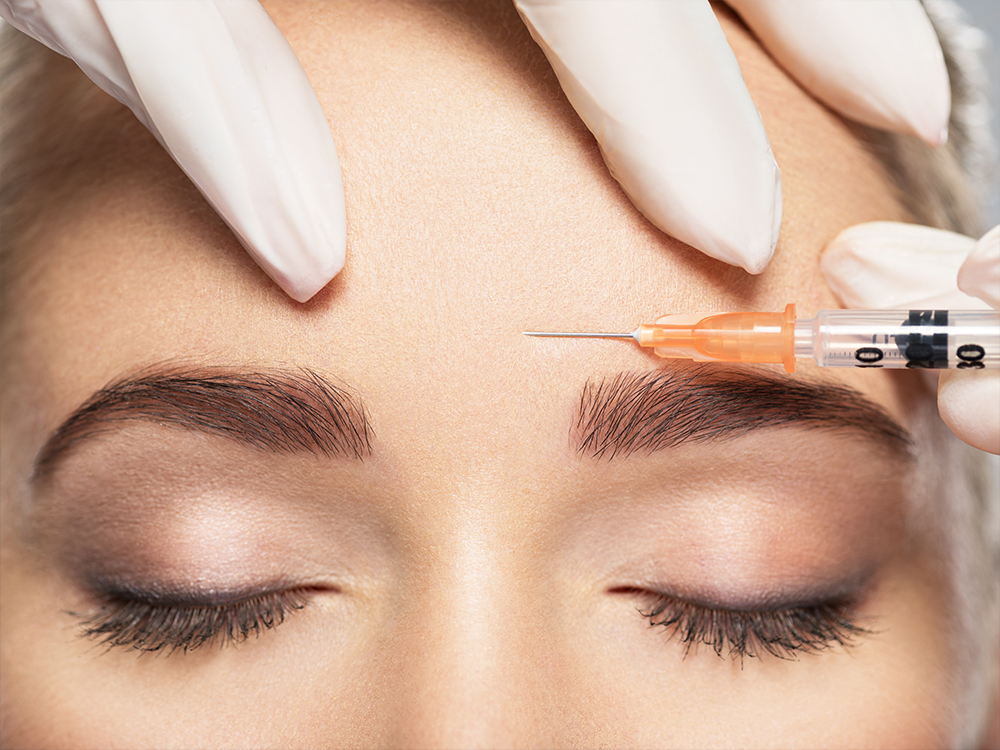These days, options like Botox Cosmetic, Xeomin, Dysport, Jeuveau and Daxxify are some of the best and most popular ways to address signs of aging like wrinkles. But, according to New York dermatologist Julie Russak, MD, there’s so much more to love about neurotoxins.
The Role of Neurotoxins
According to Dr. Russak, neurotoxins are mostly used to treat wrinkling in the upper face. “The primary areas people focus on are the forehead, glabella (the “11 lines” between the brows) and crow’s feet,” she explains. “These treatments help soften expression lines, creating a rested, approachable appearance.”
They achieve this softened, rejuvenated look by addressing the facial muscles directly.
“They work by temporarily relaxing muscles to reduce the appearance of dynamic wrinkles, improve skin quality and prevent signs of aging,” Russak says. “However, there is much more to Botox.”
Unexpected Uses for Wrinkle Relaxers
Beyond the upper face, Dr. Russak uses neurotoxins to treat skin texture, improve contour and even improve facial balance.
“Some of the less common yet incredibly transformative areas to use neurotoxins include the chin, to smooth dimpling or ‘orange peel’ texture,” she explains. “As well as the nose, for subtle lifting of the nasal tip or to soften bunny lines. I also focus on the jawline for contouring and work on creating balance and symmetry in the perioral region (around the mouth) to lift downturned corners or soften smoker’s lines.”
And notably, neurotoxins can go far beyond even the full-face Botox approach, with benefits for many areas of the body.
“It’s used to reduce sweating in areas like the underarms, hands and feet—a life-changing solution for those with hyperhidrosis,” Dr. Russak says. “It also helps relax tight neck muscles, improve posture and reduce the appearance of a bulky trapezius for a sleeker shoulder line.”
The Full-Face Approach
For Dr. Russak, getting the most out of neurotoxins means addressing the face holistically.
“Full-face harmonization with Botox isn’t just about addressing isolated wrinkles—it’s about balancing, rejuvenating and creating symmetry across the face,” she explains. “For example, strategically relaxing overactive muscles, like the depressor anguli oris (which pulls the corners of the mouth downward) or the platysma (which can contribute to sagging in the jawline and neck), we can reduce downward tension and achieve a naturally lifted, youthful appearance.”
An expert understanding of facial anatomy allows Dr. Russak to address multiple signs of aging with a full-face Botox approach.
“The ‘full-face’ Botox trend for facial harmonization, popular in Asia, focuses on achieving a smoother, more balanced look and is another favorite,” Dr. Russak says. “This approach goes beyond wrinkle reduction to address proportions, symmetry and even overall facial tone. Whether the goal is subtle refinement or full-face rejuvenation, these less conventional treatments can play an important role in achieving a harmonious and refreshed look.”
Expectations, Timelines and Results
“Patients can expect a gradual improvement in facial harmony, reduced lines and enhanced skin quality with consistent Botox treatments,” Dr. Russak says. “Initial results typically appear within three to sevent days, with full effects visible by two weeks. Over time and with regular treatments every three to four months, Botox not only maintains these results but also prevents the formation of deeper lines by training the muscles to relax.”
She recommends patients a full-face Botox approach when patients want a more harmonized look that still offers natural-looking rejuvenation.
“A full-face approach is ideal for individuals looking for a more balanced, youthful look,” Dr. Russak explains. “It’s not about freezing the face but about creating subtle, natural enhancements that work synergistically across all areas. This approach is particularly beneficial for patients who want to address multiple areas of concern, such as forehead lines, jaw tension and neck laxity.”
